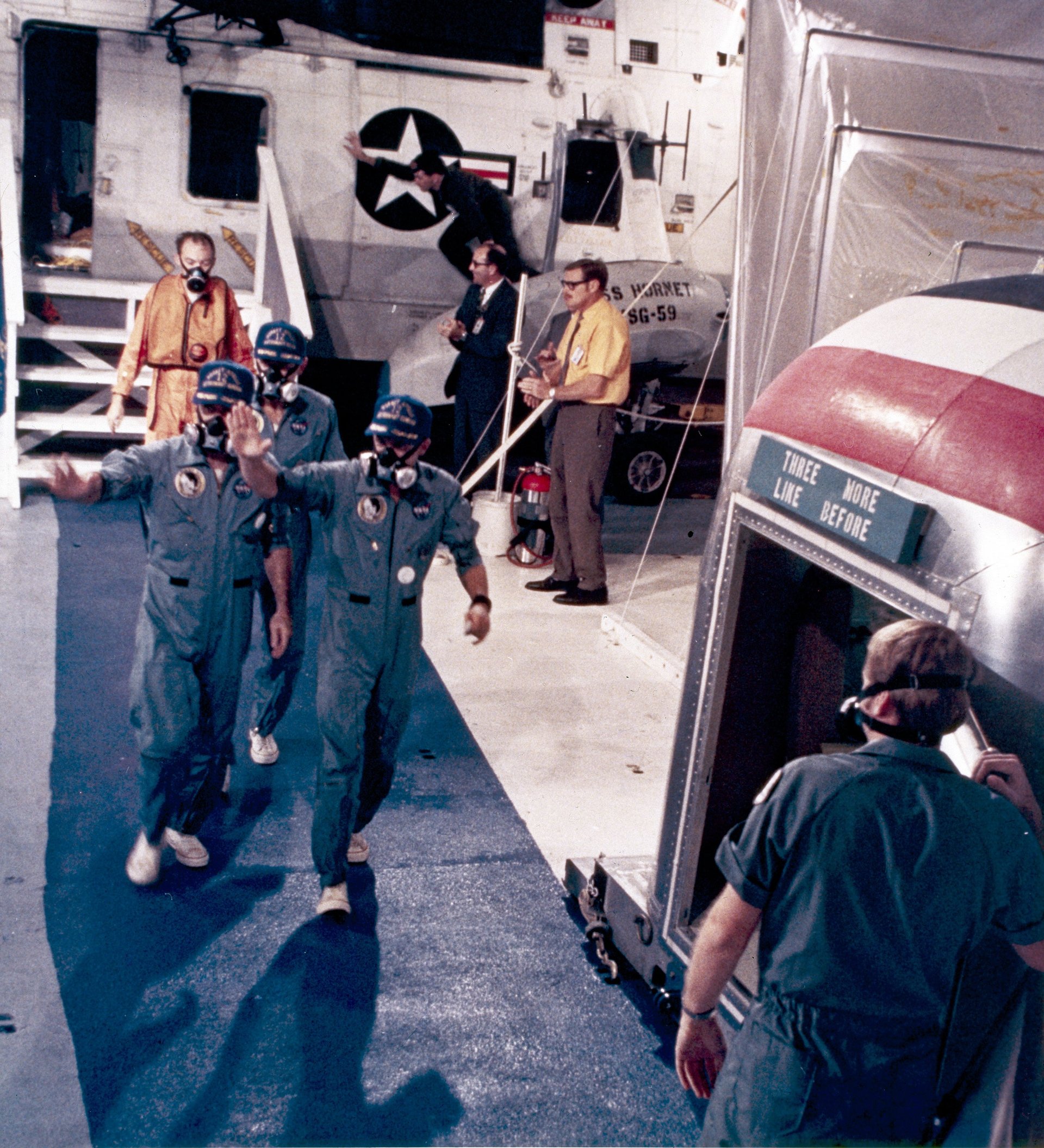Space Business: Take a Guess
Dear readers,

Dear readers,
Welcome to Quartz’s newsletter on the economic possibilities of the extraterrestrial sphere. Please forward widely, and let me know what you think. This week: The big news of the year, quarantine qlassics and, goodbye, Gateway.
🚀 🚀 🚀
Space. Wouldn’t it be nice to be there, instead of here? I’m starting to think one of those $50 million tourism tickets to the International Space Station might be worth every penny.
It’s stressful times on Earth as humans battle SARS-CoV-2. Your correspondent is sheltering in place here in the Bay Area. NASA employees are on mandatory telework. The European Space Agency closed its launch site in French Guiana, and delayed a Mars mission partially because of the virus. Space Symposium, the premiere global space conference, is canceled. Blue Origin, in hard-hit Seattle, is still at work, albeit mostly online.
Space companies around the world are facing tough decisions about how to protect their workers (and their communities) from illness while still making money. Even Buzz Aldrin is self-isolating—but it hasn’t broken his spirit. That makes sense: Spaceworld, a global engineering and science community like none other, ought to be most prepared for the current situation.
After all, a NASA engineer coined the term “telecommuting” in 1973. The space agency’s quarantine procedures for astronauts are so rigorous that a flight of American and Russian personnel to the International Space Station is expected to go off as planned on April 9. And, yes, at least one former astronaut developed a personal plan of action in event that a disaster shut down life on Earth while he was still on station.
Thanks to government backing and long lead times, the space industry is better off than many sectors. But the cracks are already appearing: Boeing, troubled before the pandemic, is swooning alongside its key customers in the airline industry and seeking a $60 billion rescue. GoGo, the in-flight internet company, is asking its satellite partners to delay payments as airline passengers evaporate. And no firm is immune from a looming credit crunch and likely global recession.
The next year will be a major test, particularly for venture-backed and commercially-focused space companies trying to gain traction. I take hope from my conversations with engineers and entrepreneurs who are still working on projects they believe will make the world a better place. NASA has just invited reporters to watch the first launch of a crewed spacecraft from the US since 2011, in a SpaceX Dragon no later than mid-May. I’ll try to be there.
In the meantime, stay safe, keep washing your hands, and don’t hesitate to reach out with news about how your corner of the world is faring.
🌘 🌘 🌘
Imagery Interlude
Who says quarantines can’t be fun? NASA keeps its astronauts apart from the general population for 10 days before they go into space, so that they don’t bring a dormant infection with them, and often afterward, to ensure any extra-terrestrial contamination is contained on Earth. It’s a good example for all of us.
Astronauts, like the team from Apollo 12 here, knew about the importance of protective gear AND looking good with your crew.

They had to put up with separation from their loved ones, like the Apollo 11 crew meeting their wives through glass after returning from their historic mission.

Imagine if you had to rely on newspapers, TV and radio for news instead of the maelstrom that is the internet?

Modern astronauts in quarantine take advantage of videoconferencing technology, just like all of us.

And sometimes, they have to celebrate special occasions with their quarantine crew, like Neil Armstrong celebrating his 39th birthday shortly after returning from the moon.

🛸 🛸 🛸
🚨 Read this 🚨
When times are bad, think of the children. “PGT” is a controversial add-on to fertility care that screens embryos for potential abnormalities. Some clinicians think it signals a larger trend of IVF add-on procedures that are expensive and ineffective at best. Learn more in this week’s deep dive into the business of fertility.
🚀 🚀 🚀
SPACE DEBRIS
A spaceport bogged down. Attempts to build a new spaceport in the United Kingdom have run into serious objections, as the site threatens 800 acres of Europe’s largest, carbon-storing peat bog. Like any big construction project, the calculus here is jobs and investment versus environmental impact and local objections. The problem with spaceports, however, is that they are almost always boondoggles. The limiting factor on space activity is not insufficient launch sites, but limited rockets and payloads. Brexit complicates matters: The UK wants its own spaceport. It still doesn’t have its own rocket, however, with hopes pinned on the start-up Orbex to debut a small rocket by next year. The other intended user of the new spaceport, Rocket Lab, already has two operational launch sites, in the US and New Zealand. Why not just ship the sats?
Short March. A new rocket developed by China, the Long Mach 7A, failed to deliver a satellite to the correct orbit during a launch on March 16. The setback may have implications for the country’s ambitious space agenda, depending on the reason for the failure. The new vehicle shares parts with several other Chinese rockets, and depending on what went wrong, could mean trouble for Mars missions, the country’s forthcoming space station project, or simply launching satellites without dropping toxic rocket stages on nearby people.
Goodbye, Gateway. NASA human spaceflight honcho Doug Loverro says that the agency won’t depend on a way station in orbit around the moon, known as the Lunar Gateway, as part of its plans to meet the Trump White House’s 2024 deadline to return astronauts to lunar soil. From an engineering point of view, it makes sense. You don’t technically need it to put people back on the moon. As Loverro says, “if it’s not mandatory, it’s not necessary.”
What do you need the Gateway for? To make repeated missions cheaper, to include international partners, and to achieve the broader scientific, commercial and exploration goals that would make a moon mission more than an echo of past glories. As NASA administrator Jim Bridenstine explained it to me in 2018, “We can prove that we can get to the moon faster than anyone else. That race is over. We won. Now it’s time to build sustainable architecture…what we don’t want to do is recreate Apollo and then not go back for 50 years.”
Stop me if you’ve heard this one before. A new NASA inspector general report found another project was mismanaged at huge expense—this time, the $1 billion-plus effort to construct a mobile launch tower for Boeing’s forthcoming SLS rocket.
Satellite data, no special hardware needed. Lynk, a space start-up, says it has sent the first message from a satellite to an unmodified mobile phone, in this case, an Android device. Another company, AST-Science, says that it “successfully tested” similar technology onboard a prototype satellite and wants to launch a roaming network for mobile phones, backed by Rakuten and Vodafone. Most new satellite connectivity plays, like SpaceX’s Starlink or OneWeb, require a separate communications hub to link satellites and users’ devices. It’s not clear yet what kind of network capacity these direct-phone-companies can offer, but it presents an intriguing business model.
Your pal,
Tim
This was issue 39 of our newsletter. Hope your week is out of this world! Please send your space solutions to Coronavirus problems, schemes for new satellite constellations, tips, and informed opinions to [email protected].